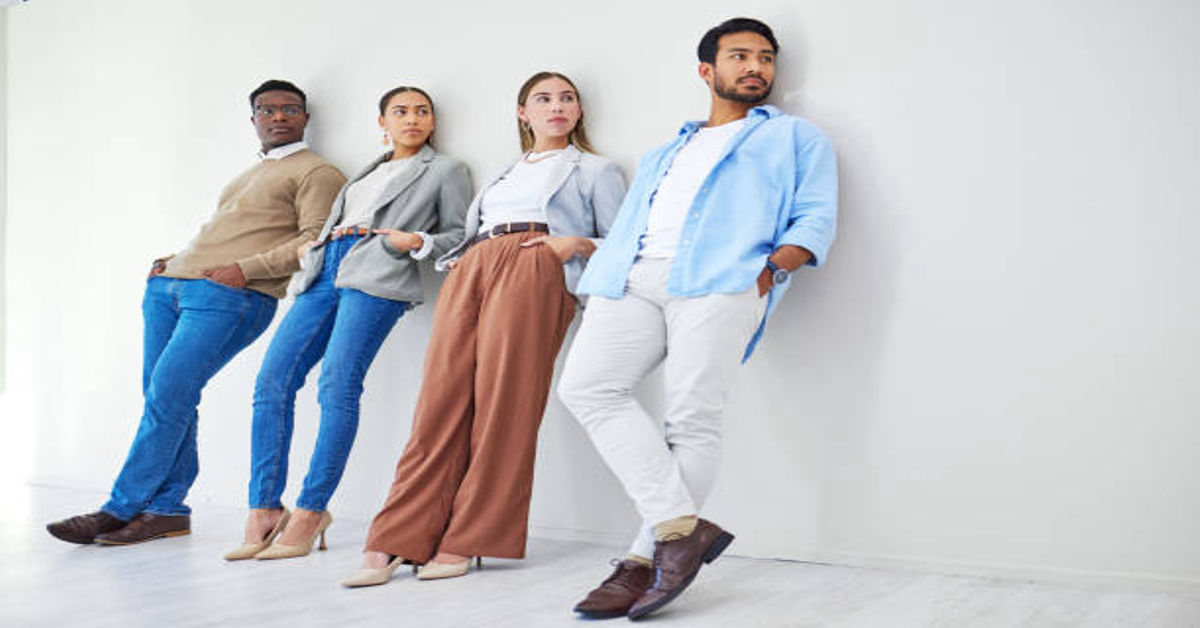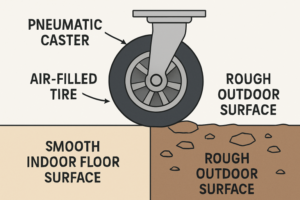In the modern fashion world, the term smart casual has emerged as one of the most versatile and widely used dress codes. It strikes a balance between formal business attire and relaxed casual wear, allowing individuals to appear stylish, confident, and appropriate in a variety of social, professional, and semi-formal settings. Despite its popularity, many people are unsure what truly defines smart casual, how to achieve it, or which occasions call for it. Understanding smart casual requires a nuanced look at its history, principles, clothing elements, color schemes, accessories, and modern adaptations. This comprehensive guide aims to provide detailed insight into the concept of smart casual and practical advice for both men and women, helping anyone navigate the fine line between casual comfort and professional sophistication.
1. Understanding the Concept of Smart Casual
The term smart casual is a dress code that combines elements of formal, business, and casual attire. Unlike strictly formal dress codes like business formal or black-tie, smart casual offers flexibility, but it still maintains a polished, intentional appearance. Essentially, smart casual is about looking well-put-together without appearing overdressed or sloppy.
Historically, smart casual originated in the mid-20th century as workplaces and social gatherings began to relax strict dress norms. Professionals wanted to move away from rigid suits but still maintain an image of refinement. Over time, it evolved into a standard for business-casual environments, dinners, parties, and networking events where a balance between elegance and comfort is necessary.
Key characteristics of smart casual include:
- Clean, well-fitted clothing
- Neutral or coordinated color palettes
- Minimal but stylish accessories
- Attention to footwear and grooming
Unlike casual wear, smart casual communicates intention and self-respect, while avoiding the stiffness of formal business attire.
2. Key Principles of Smart Casual Attire
Creating a smart casual outfit requires attention to several principles that ensure you look both stylish and appropriate:
- Fit is Crucial: Properly fitting clothing is the cornerstone of smart casual style. Baggy or overly tight items disrupt the polished look. Tailored jackets, shirts, or chinos make a significant difference.
- Balance Between Formal and Casual: Smart casual blends formal pieces (like blazers, dress shirts, or pencil skirts) with casual elements (like denim, polo shirts, or loafers). The trick is to mix without clashing.
- Quality Over Quantity: Choosing higher-quality materials and well-constructed garments improves appearance, even if the style is simple.
- Neutral and Coordinated Colors: Earth tones, navy, white, black, grey, and beige provide a timeless smart casual palette. Bright colors can be incorporated as accents or accessories.
- Subtle Patterns: Patterns like checks, stripes, or minimal prints can enhance outfits without appearing informal. Avoid overly loud or cartoonish prints.
- Appropriate Footwear: Shoes often define the tone of an outfit. Polished loafers, brogues, ballet flats, and minimalist sneakers are ideal.
- Minimalist Accessories: Watches, belts, and understated jewelry complement smart casual outfits without overwhelming them.
3. Smart Casual for Men
Smart casual for men can range from business-like outfits to more relaxed yet polished ensembles.
Core Clothing Pieces for Men:
| Item | Guidelines | Notes |
|---|---|---|
| Blazer/Sports Jacket | Tailored, neutral colors | Can be paired with chinos or dark jeans |
| Dress Shirt | Solid colors or subtle patterns | Can be tucked in or worn casually untucked |
| Polo Shirt | Fitted, high-quality fabric | Suitable for less formal smart casual settings |
| Sweater/Cardigan | Lightweight, neutral tones | Layered over shirts or under jackets |
| Trousers/Chinos | Slim-fit, versatile colors | Avoid overly formal dress pants unless needed |
| Jeans | Dark wash, clean, no distress | Casual element without looking sloppy |
| Shoes | Loafers, brogues, derby shoes | Minimalist sneakers acceptable in modern contexts |
| Accessories | Leather belt, watch, subtle tie | Adds sophistication without overdressing |
Example Outfits for Men:
- Navy blazer + white dress shirt + beige chinos + brown loafers
- Grey sweater over collared shirt + dark jeans + brogues
- Light blue polo shirt + slim-fit trousers + minimalist sneakers
4. Smart Casual for Women
For women, smart casual is equally versatile but allows for more variety in fabrics, cuts, and colors.
Core Clothing Pieces for Women:
| Item | Guidelines | Notes |
|---|---|---|
| Blouse/Shirt | Neutral or pastel tones | Can be paired with skirts, trousers, or jeans |
| Blazer/Cardigan | Tailored, structured fit | Adds professionalism to casual outfits |
| Dresses | Knee-length or midi | Avoid overly formal or casual designs |
| Skirts | Pencil, A-line, or midi | Can be paired with blouses or sweaters |
| Trousers/Chinos | Slim or straight fit | Flexible for office or social events |
| Jeans | Dark wash, clean, minimal distress | Works for semi-formal smart casual occasions |
| Shoes | Ballet flats, loafers, block heels | Minimalist sneakers acceptable in modern trends |
| Accessories | Watches, subtle jewelry, scarves | Enhances outfit without overpowering it |
Example Outfits for Women:
- White blouse + tailored navy trousers + nude ballet flats
- Midi dress + fitted blazer + block heels
- Sweater tucked into A-line skirt + loafers + minimalist necklace
5. Color Schemes and Patterns
Color coordination is vital for smart casual style. Neutral, muted colors dominate, but accent colors can make outfits pop.
Recommended Color Palettes:
| Base Colors | Accent Colors |
|---|---|
| Navy, Black, White, Grey, Beige | Burgundy, Olive, Mustard, Pastel shades |
| Earth tones (brown, tan) | Soft blues, muted pinks |
| Denim | Subtle stripes, checks, polka dots |
Patterns should remain subtle to maintain the polished but relaxed look. Examples include:
- Thin stripes on shirts
- Small-scale checks or plaids on blazers
- Minimalistic floral prints on women’s blouses or dresses
6. Accessories in Smart Casual
Accessories in smart casual are minimal but purposeful. They add refinement without appearing flashy.
Key Accessories:
| Accessory | Tips |
|---|---|
| Watches | Leather strap or metallic minimalistic designs |
| Belts | Coordinate with shoes; leather preferred |
| Scarves | Light scarves in solid colors or subtle prints |
| Jewelry | Small, elegant, and understated |
| Bags | Structured handbags or leather briefcases for work |
| Sunglasses | Classic frames (aviators, wayfarers) |
Properly chosen accessories can elevate an otherwise simple outfit to a polished smart casual look.
7. Smart Casual in Professional Settings
Smart casual is increasingly accepted in workplaces, especially in creative industries, tech companies, and modern offices. Understanding when and how to wear smart casual in professional contexts is key.
Guidelines for Professional Smart Casual:
- Avoid overly ripped jeans or casual sneakers
- Blazers and structured tops increase professionalism
- Maintain grooming standards (neatly styled hair, minimal fragrances)
- Subtle patterns and muted colors convey seriousness while remaining approachable
Example Work Outfits:
- Men: Grey blazer + white shirt + dark chinos + brown brogues
- Women: White blouse + midi pencil skirt + nude block heels
8. Smart Casual in Social Events
Smart casual is equally important in social occasions like dinners, brunches, and semi-formal gatherings. The goal is to appear polished but not overly formal.
Tips for Social Smart Casual:
- Combine casual elements (jeans or casual dresses) with formal touches (blazers, loafers, or heels)
- Experiment with colors and textures while maintaining coordination
- Add statement accessories sparingly
Example Social Outfits:
- Men: Dark jeans + blazer + patterned shirt + loafers
- Women: Casual midi dress + tailored jacket + ankle boots
9. Smart Casual Mistakes to Avoid
Even small errors can undermine a smart casual look. Common mistakes include:
- Wearing overly casual sneakers or flip-flops
- Choosing bright, mismatched colors
- Ignoring grooming and fit
- Over-accessorizing or using flashy jewelry
- Selecting clothes that are too formal, creating a “business suit” look
Being aware of these mistakes ensures a polished and intentional smart casual appearance.
10. Modern Adaptations of Smart Casual
In recent years, smart casual has evolved to incorporate modern fashion trends:
- Slim-fit, tapered trousers and jeans
- Sustainable and eco-friendly fabrics
- Casual sneakers in muted tones
- Minimalist watches and tech accessories like smartwatches
- Layering of casual jackets with formal tops for versatility
This evolution allows for more individual expression while staying true to the principles of smart casual.
11. Seasonal Smart Casual Tips
Smart casual can be adapted to different seasons for comfort and style.
| Season | Men | Women |
|---|---|---|
| Spring | Light blazer + chinos + loafers | Blouse + light skirt + ballet flats |
| Summer | Linen shirt + slim trousers + moccasins | Sleeveless blouse + midi skirt + sandals |
| Autumn | Sweater + dark jeans + boots | Cardigan + trousers + ankle boots |
| Winter | Wool blazer + layered shirt + dress shoes | Coat + sweater + midi dress + boots |
Choosing fabrics suitable for temperature ensures comfort while maintaining the smart casual aesthetic.
12. Summary Table: Smart Casual Essentials
| Category | Men | Women |
|---|---|---|
| Tops | Dress shirt, polo, sweater, blazer | Blouse, tailored top, sweater, blazer |
| Bottoms | Chinos, trousers, dark jeans | Pencil skirt, midi skirt, trousers, dark jeans |
| Footwear | Loafers, brogues, minimalist sneakers | Ballet flats, block heels, loafers, minimalist sneakers |
| Accessories | Watch, belt, scarf | Watch, scarf, subtle jewelry |
| Colors | Neutrals with accent tones | Neutrals with accent tones |
| Fit | Tailored, clean lines | Tailored, structured, clean lines |
13. Frequently Asked Questions
1. What is smart casual dress code?
Smart casual is a flexible dress code combining elements of formal and casual attire to create a polished, stylish look suitable for work and social events.
2. Can jeans be part of smart casual?
Yes, dark, clean, and well-fitted jeans are acceptable, often paired with blazers, shirts, or smart shoes.
3. Are sneakers allowed in smart casual?
Minimalist, clean sneakers are acceptable, especially in modern workplaces, but avoid athletic or flashy styles.
4. Is smart casual appropriate for professional meetings?
Yes, especially in creative or modern offices, as long as clothing is neat, tailored, and coordinated.
5. How can women accessorize smart casual outfits?
Women should choose subtle jewelry, structured handbags, watches, and light scarves to enhance elegance without overpowering the outfit.
14. Conclusion
Smart casual is a versatile and timeless dress code that balances elegance, comfort, and style. By understanding its principles, choosing well-fitted clothing, coordinating colors, selecting appropriate footwear, and using minimalist accessories, both men and women can achieve a polished and confident appearance. From professional environments to social gatherings, mastering smart casual ensures you present yourself as stylish, approachable, and intentional. As fashion evolves, smart casual adapts without losing its core focus: refinement with ease, sophistication without stiffness, and comfort without compromising style.









